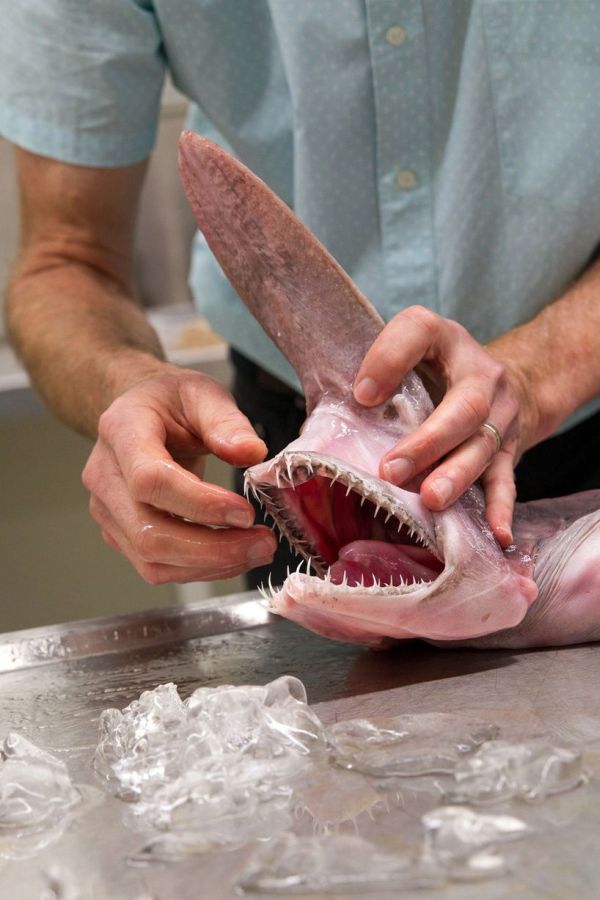|
|
Goblin Shark Catch, Green Cape, New South Wales, Australia, South Pacific Ocean
|
• Feeding
The goblin shark feeds mainly on teleost fishes such as rattails and dragonfishes. It also consumes cephalopods and crustaceans, including decapods and isopods. Garbage has been recorded from the stomachs of some specimens. Its known prey includes bottom-dwelling species such as the blackbelly rosefish (Helicolenus dactylopterus), and midwater species such as the squid Teuthowenia pellucida and the ostracod Macrocypridina castanea rotunda. Thus, the goblin shark appears to forage for food both near the sea floor and far above it. Since it is not a fast swimmer, the goblin shark may be an ambush predator. Its low-density flesh and large oily liver make it neutrally buoyant, allowing it to drift towards its prey with minimal motions so as to avoid detection. Once prey comes into range, the shark's specialized jaws can snap forward to capture it. The protrusion of the jaw is assisted by two pairs of elastic ligaments associated with the mandibular joint, which are pulled taut when the jaws are in their normal retracted position; when the shark bites, the ligaments release their tension and essentially "catapult" the jaws forward. At the same time, the well-developed basihyal (analogous to a tongue) on the floor of the mouth drops, expanding the oral cavity and sucking in water and prey.
• Life history
Little is known about goblin shark reproduction because a pregnant female has yet to be found and studied. It likely shares the reproductive characteristics of other mackerel sharks, which are viviparous with small litter sizes and embryos that grow during gestation by eating undeveloped eggs (oophagy). The birth size is probably close to 82 cm (32 in), the length of the smallest known specimen. Males mature sexually at about 2.6 m (8.5 ft) long, while female maturation size is unknown. No data are available on growth and aging.
|
|









